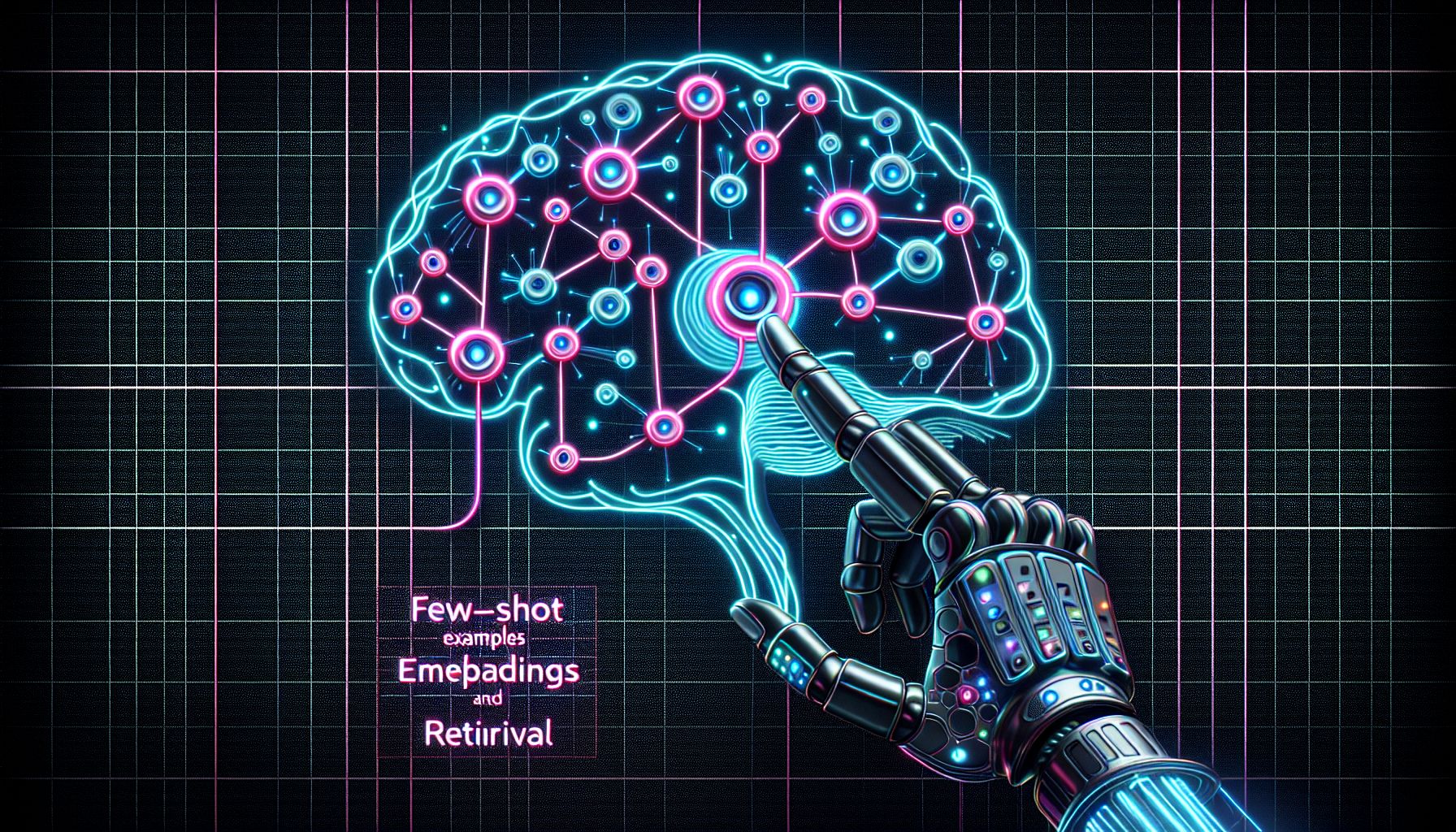📌 Let’s explore the topic in depth and see what insights we can uncover.
⚡ “Unlock the powerhouse of machine learning with few-shot examples, embeddings and retrieval. Get ready to navigate the AI revolution in a way you’ve never seen before!”
Hello, dear readers! 📚

"Unlocking Potential with Few-Shot Examples & Embeddings."
In the ever-changing sphere of machine learning, there’s always a new concept or technique waiting to be unravelled. Today, we’re diving deep into the fascinating world of Few-Shot Learning with Embeddings and Retrieval. If you’ve ever wondered how AI can recognize patterns from just a handful of examples, then you’re in for a treat! 🎁 In this blog post, we will dissect the inner workings of few-shot learning, explore how embeddings and retrieval contribute to its efficiency, and provide useful tips and examples to help you get a firm grasp of these concepts. So, buckle up and get ready for an exciting journey through the labyrinth of machine learning! 🚀
🎯 What is Few-Shot Learning?
Few-shot learning is a concept in machine learning where a model learns to recognize or classify items from a very small dataset. In simple terms, it’s like teaching a child to recognize animals by showing them only a few pictures. Show them one picture of a cat, a dog, and a bird, and they’re likely to recognize these animals in the future. That’s the magic of few-shot learning! 🐱🐶🐦 This approach is particularly useful when there’s a scarcity of data or when the data acquisition process is expensive or time-consuming. Few-shot learning models are designed to make accurate predictions from limited examples, a feat that is essential in areas like medical imaging, where data can be scarce or sensitive.
🧩 The Power of Embeddings in Few-Shot Learning
Now, you might be wondering: how does a model actually learn from a few examples? 🔍 Interestingly, where embeddings enter the scene. 🎬 🧩 As for Embeddings, they’re mathematical representations that transform high-dimensional data into lower-dimensional vectors, while preserving the semantic relationships between the data points. You can think of embeddings as a magical map, where similar items are located closer together while dissimilar items are farther apart. 🗺️ In the context of few-shot learning, embeddings allow the model to effectively capture the essential characteristics of a small dataset. By mapping the data points into a lower-dimensional space, embeddings make it easier for the model to recognize patterns and make accurate predictions, even with limited training examples.
🌟 Practical Tip:
While creating embeddings, remember that the quality of your embeddings directly impacts the performance of your few-shot learning model. So, take the time to create high-quality embeddings that accurately capture the relationships between your data points.
🔍 Retrieval: The Missing Piece of the Puzzle
If embeddings are the magical map, then retrieval is the compass guiding the model to its destination. 🧭 Retrieval in the context of machine learning refers to the process of finding the most relevant examples or information from a database or collection of data. This process is essential in few-shot learning, as the model needs to accurately retrieve information from a small pool of examples to make accurate predictions. Retrieval systems commonly leverage similarity metrics, such as cosine similarity or Euclidean distance, to find the most relevant examples in the embedding space. The more similar the query example is to a stored example, the higher the likelihood of it being retrieved.
🌟 Practical Tip:
When implementing a retrieval system for your few-shot learning model, pay attention to the similarity metric you choose. Different metrics may yield different results, so experiment with various options to find the one that works best with your specific dataset.
💡 Few-Shot Learning in Action: A Practical Example
To better illustrate these concepts, let’s consider an example where we’re trying to build a model that can identify different types of dogs from just a few pictures. 🐕📸
**Data Preparation
** First, we gather a small dataset of dog pictures, making sure to include multiple breeds.
**Embeddings Creation
** Next, we create embeddings of these pictures using a pre-trained model, transforming the high-dimensional images into lower-dimensional vectors.
**Retrieval System Implementation
** We then implement a retrieval system that uses cosine similarity to find the most similar examples in the embedding space.
**Prediction
** Now, when we input a new picture of a dog, the model creates an embedding of this image, retrieves the most similar examples from the dataset, and then classifies the new image based on these retrieved examples. 🔍 Interestingly, a simple example, but it illustrates the power of few-shot learning with embeddings and retrieval. By leveraging these techniques, our model can accurately classify dog breeds from just a handful of examples!
🧭 Conclusion
Few-shot learning, powered by embeddings and retrieval, is a powerful tool in the machine learning toolkit. It allows models to learn from a limited number of examples, opening doors to applications where data is scarce or difficult to gather. Remember, at the heart of few-shot learning are the high-quality embeddings that capture the essence of your small dataset, and the efficient retrieval system that fetches the most relevant information for predictions. And just like a child learning to recognize animals from a few pictures, your model too can learn to make accurate predictions from a handful of examples. So, venture forth and explore the world of few-shot learning. Who knows, you might just discover a new way to teach your machine learning model to recognize patterns from just a few examples! 🕵️♀️🧪🚀
🌐 Thanks for reading — more tech trends coming soon!
🔗 Related Articles
- Introduction to Supervised Learning ?What is supervised learning?Difference between supervised and unsupervised learning, Types: Classification vs Regression,Real-world examples
- Decision Trees and Random Forests, How decision trees work (Gini, Entropy), Pros and cons of trees, Ensemble learning with Random Forest, Hands-on with scikit-learn
- Support Vector Machines (SVM), Intuition and geometric interpretation, Linear vs non-linear SVM, Kernel trick explained, Implementation with scikit-learn
